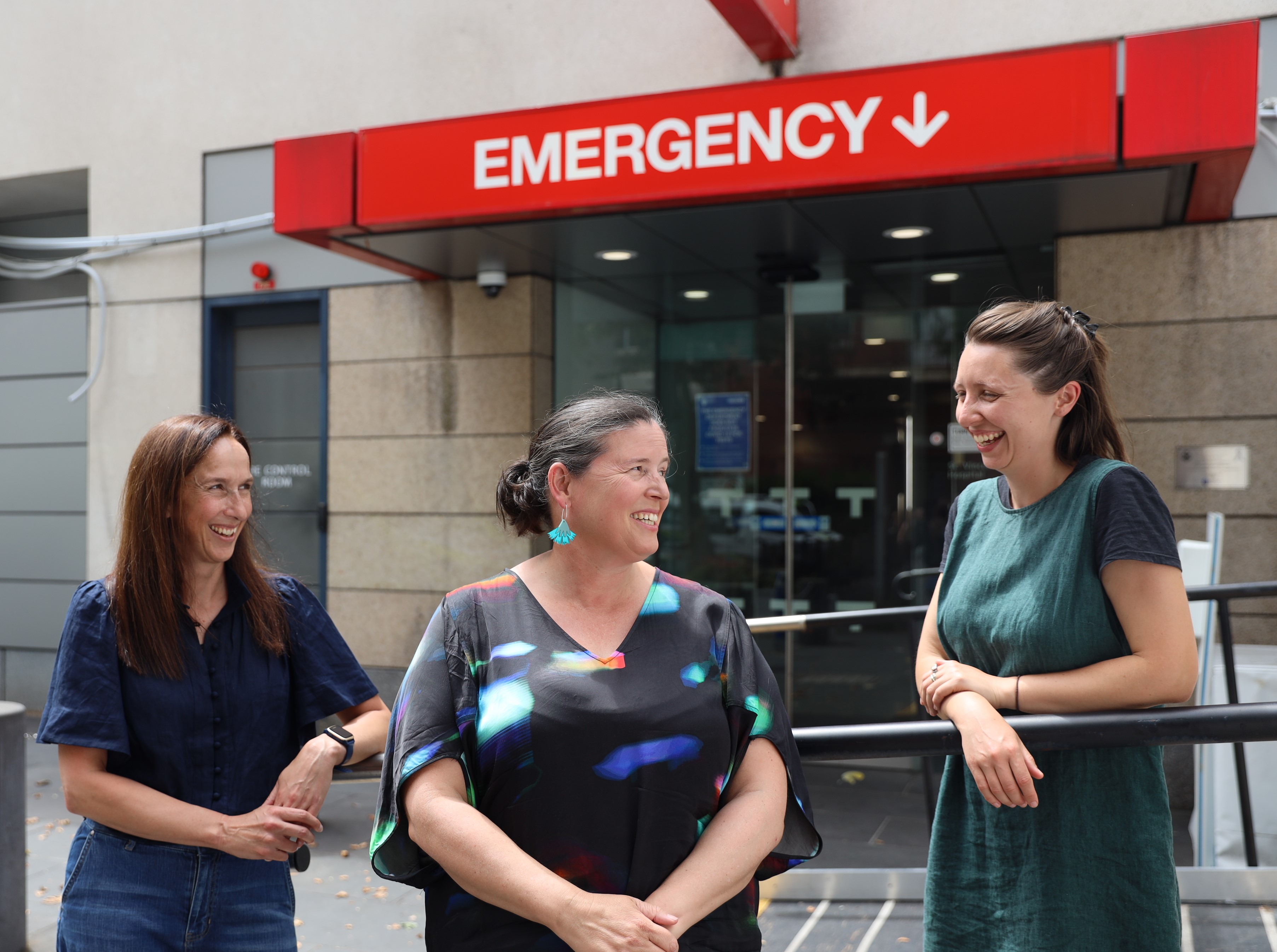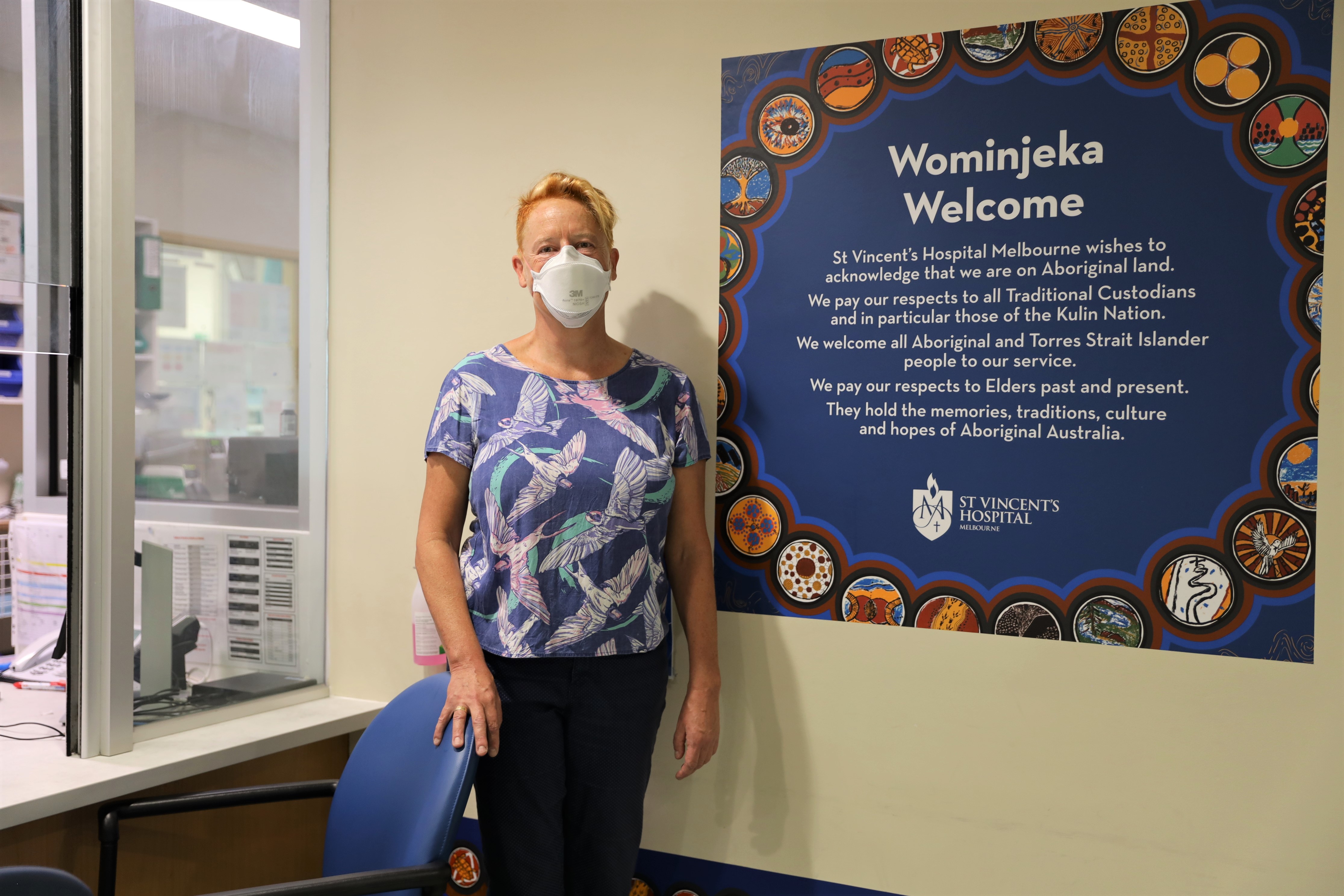St Vincent’s wins Culturally Safe ED award
A special project group formed to prioritise the care and cultural safety of Aboriginal and Torres Strait Islander patients attending our Emergency Department has been nationally recognised.
The Al Spilman award for Culturally Safe Emergency Departments, 2022 was presented to St Vincent’s Hospital Melbourne by the Australasian College for Emergency Medicine to acknowledge the positive work being led in this area by SVHM’s Indigenous Health Equity Working Group (IHEWG).
“As a group, we identified that we needed to build knowledge and competency to make the ED a safer and more welcoming place for Aboriginal and Torres Strait Islander people,” said Dr Georgina Phillips, an Emergency Physician at St Vincent’s who founded the IHEWG project in 2020.
“The important work being done through this group has helped me reconnect in a very meaningful way with my colleagues, and it makes me proud to be part of, and work alongside, a group of people who are committed to transforming our Emergency Department and how we deliver care and treat people.”

Image: Dr Jennie Hutton (centre) pictured with Nicole Watt and Deborah Barnes (right) from St Vincent’s Wilam Ngarrang team
Providing equitable care
Currently led by Emergency Physician, Dr Jennie Hutton, the IHEWG is supported by a multidisciplinary team that harnesses the collaborative energy and expertise from across the Emergency Department, including clinical, administration and security staff, together with members of the Wilam Ngarrang Aboriginal Health Unit.
The group’s work has so far involved generating and implementing ideas, interventions and reforms that specifically target the cultural safety and trauma-informed care of First Nations people.
“Although First Nations patients make up 0.5 per cent of the population in the hospital’s surrounding local government areas, they comprise 3.5 per cent of ED presentations. This project has enabled us to provide more equitable access to First Nations people who choose to come to our ED,” said Dr Hutton.

Image: Dr Georgina Phillips
Implementing important change
Among the challenges faced was the lack of consistent identification of First Nations patients. Although part of mandatory questioning, barriers were highlighted by ED staff that potentially prevented these patients from being accurately identified.
“We found information often wasn’t flowing through to all staff and this could result in patients not being properly identified at different stages and some getting asked the same identity questions lots of times, which became frustrating, and sometimes distressing, for the patient,” Dr Phillips explained.
The Rapid Identification and Engagement of First Nations People is a new process developed and introduced by the group to ensure all patients are correctly identified on arrival and that this information is communicated directly to other hospital staff via an identification flag that is added to the patient’s computer administration file.
An Aboriginal or Torres Strait Islander flag next to the patient’s name provides a visual prompt to quickly assist ED staff in prioritising culturally safe and appropriate help and treatment to patients with a First Nations background.
This process also activates a fast-tracking system to ensure that when a First Nations patient presents at the triage stage in ED, prompt assessment and escalation is actioned.
“Accurate identification ensures that we are able to appropriately support our First Nations Community throughout their entire hospital experience,” said Nicole Watt, Manager of St Vincent’s Aboriginal Hospital Liaison Service.
The waiting room was also identified as a space that needed to be more culturally safe and inviting to encourage patients to stay. Changes that the group implemented include displaying Indigenous artworks in the waiting area, prominent ‘Wominjeka’ welcome signage and an Acknowledgement of Country.
In tandem with these changes, education has been a key focus to empower ED staff with strategies that can assist them in delivering more holistic care and working more collaboratively with the hospital’s Aboriginal Health Liaison Officers.
“First Nations patients regularly tell our Aboriginal Health Liaison Officers that they have benefited from the cultural support and medical assessment that is provided here, especially during times of distress and anxiety, and appreciate being prioritised by the Rapid Assessment Team,” said Nicole.